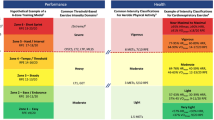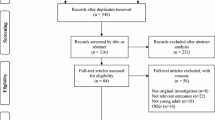Abstract
Reduced exercise capacity is nearly universal among Fontan patients. Although many factors have emerged as possible contributors, the degree to which each impacts the overall hemodynamics is largely unknown. Computational modeling provides a means to test hypotheses of causes of exercise intolerance via precisely controlled virtual experiments and measurements. We quantified the physiological impacts of commonly encountered, clinically relevant dysfunctions introduced to the exercising Fontan system via a previously developed lumped-parameter model of Fontan exercise. Elevated pulmonary arterial pressure was observed in all cases of dysfunction, correlated with lowered cardiac output (CO), and often mediated by elevated atrial pressure. Pulmonary vascular resistance was not the most significant factor affecting exercise performance as measured by CO. In the absence of other dysfunctions, atrioventricular valve insufficiency alone had significant physiological impact, especially under exercise demands. The impact of isolated dysfunctions can be linearly summed to approximate the combined impact of several dysfunctions occurring in the same system. A single dominant cause of exercise intolerance was not identified, though several hypothesized dysfunctions each led to variable decreases in performance. Computational predictions of performance improvement associated with various interventions should be weighed against procedural risks and potential complications, contributing to improvements in routine patient management protocol.






Similar content being viewed by others
Abbreviations
- APVR:
-
Abnormal pulmonary vascular response
- AV:
-
Atrio-ventricular
- AVB:
-
1st degree AV block
- AVVI:
-
AV valve insufficiency
- ChI:
-
Chronotropic insufficiency
- CO:
-
Cardiac output in L/min
- DR:
-
Disordered respiration
- DiasD:
-
Diastolic dysfunction
- MET:
-
Metabolic equivalent in units of 3.5 mL O2 kg−1 min−1
- PA:
-
Pulmonary arterial
- PVR:
-
Pulmonary vascular resistance
- SysD:
-
Systolic dysfunction
- SV:
-
Stroke volume
References
Akagi, T., L. N. Benson, M. Green, J. Ash, D. L. Gilday, W. G. Williams, and R. M. Freedom. Ventricular performance before and after fontan repair for univentricular atrioventricular connection: angiographic and radionuclide assessment. J. Am. Coll. Cardiol. 20:920–926, 1992.
Baretta, A., C. Corsini, A. L. Marsden, I. E. Vignon-Clementel, T.-Y. Hsia, G. Dubini, F. Migliavacca, and G. Pennati. Respiratory effects on hemodynamics in patient-specific cfd models of the fontan circulation under exercise conditions. Eur. J. Mech. B 35:61–69, 2012.
Brooker, J., E. Alderman, and D. Harrison. Alterations in left-ventricular volumes induced by valsalva maneuver. Br. Heart J. 36:713–718, 1974.
Buda, A. J., M. R. Pinsky, N. B. Ingels, Jr., G. T. Daughters, E. B. Stinson, and E. L. Alderman. Effect of intrathoracic pressure on left ventricular performance. N. Engl. J. Med. 301:453–459, 1979.
Damato, A. N., S. H. Lau, R. Helfant, E. Stein, R. D. Patton, B. J. Scherlag, and W. D. Berkowitz. A study of heart block in man using his bundle recordings. Circulation 39:297–305, 1969.
Del Torso, S., M. J. Kelly, V. Kalff, and A. W. Venables. Radionuclide assessment of ventricular contraction at rest and during exercise following the fontan procedure for either tricuspid atresia or single ventricle. Am. J. Cardiol. 55:1127–1132, 1985.
Diller, G., A. Giardini, K. Dimopoulos, G. Gargiulo, J. Muller, G. Derrick, G. Giannakoulas, S. Khambadkone, A. Lammers, F. Picchio, M. Gatzoulis, and A. Hager. Predictors of morbidity and mortality in contemporary fontan patients: results from a multicenter study including cardiopulmonary exercise testing in 321 patients. Eur. Heart J. 31:3073–3083, 2010.
Driscoll, D. J., G. K. Danielson, F. J. Puga, H. V. Schaff, C. T. Heise, and B. A. Staats. Exercise tolerance and cardiorespiratory response to exercise after the fontan operation for tricuspid atresia or functional single ventricle. J. Am. Coll. Cardiol. 7:1087–1094, 1986.
Durongpisitkul, K., D. J. Driscoll, D. W. Mahoney, P. C. Wollan, C. D. Mottram, F. J. Puga, and G. K. Danielson. Cardiorespiratory response to exercise after modified fontan operation: determinants of performance. J. Am. Coll. Cardiol. 29:785–790, 1997.
Gersony, W. Fontan operation after 3 decades - what we have learned. Circulation 117:13–15, 2008.
Gewillig, M., S. C. Brown, B. Eyskens, R. Heying, J. Ganame, W. Budts, A. La Gerche, and M. Gorenflo. The fontan circulation: who controls cardiac output? Interact. CardioVasc. Thorac. Surg. 10:428–433, 2010.
Gewillig, M. H., U. R. Lundström, C. Bull, R. K. Wyse, and J. E. Deanfield. Exercise responses in patients with congenital heart disease after fontan repair: patterns and determinants of performance. J. Am. Coll. Cardiol. 15:1424–1432, 1990.
Goldman, L., and A. I. Schafer. Goldman’s Cecil Medicine, Chap. 5. Amsterdam: Elsevier, 2012.
Grigioni, F., M. Enriquez-Sarano, K. Zehr, K. Bailey, and A. Tajik. Ischemic mitral regurgitation - long-term outcome and prognostic implications with quantitative doppler assessment. Circulation 103:1759–1764, 2001.
Grossi, E., G. Crooke, P. Digiorgi, C. Schwartz, U. Jorde, R. Applebaum, G. Ribakove, A. Galloway, J. Grau, and S. Colvin. Impact of moderate functional mitral insufficiency in patients undergoing surgical revascularization. Circulation 114:I573–I576, 2006.
Hardt, S., S. Yazdi, A. Bauer, A. Filusch, G. Korosoglou, A. Hansen, R. Bekeredjian, P. Ehlermann, A. Remppis, H. Katus, and H. Kuecherer. Immediate and chronic effects of av-delay optimization in patients with cardiac resynchronization therapy. Int. J. Cardiol. 115:318–325, 2007.
Hsia, T., S. Khambadkone, A. Redington, F. Migliavacca, J. Deanfield, and M. De Leval. Effects of respiration and gravity on infradiaphragmatic venous flow in normal and fontan patients. Circulation 102:148–153, 2000.
Koelling, T., K. Aaronson, R. Cody, D. Bach, and W. Armstrong. Prognostic significance of mitral regurgitation and tricuspid regurgitation in patients with left ventricular systolic dysfunction. Am. Heart J. 144:524–529, 2002.
Kung, E., A. Baretta, C. Baker, G. Arbia, G. Biglino, C. Corsini, S. Schievano, I. E. Vignon-Clementel, G. Dubini, G. Pennati, A. Taylor, A. Dorfman, A. M. Hlavacek, A. L. Marsden, T.-Y. Hsia, and F. Migliavacca. Predictive modeling of the virtual hemi-fontan operation for second stage single ventricle palliation: two patient-specific cases. J. Biomech. 46:423–429, 2013.
Kung, E., G. Pennati, F. Migliavacca, T.-Y. Hsia, R. S. Figliola, A. Marsden, and A. Giardini. A simulation protocol for exercise physiology in fontan patients using a closed-loop lumped-parameter model. J. Biomech. Eng. 136(8):081007, 2014.
Lamas, G., G. Mitchell, G. Flaker, S. Smith, B. Gersh, L. Basta, L. Moye, E. Braunwald, and M. Pfeffer. Clinical significance of mitral regurgitation after acute myocardial infarction. Circulation 96:827–833, 1997.
Marsden, A. L., A. J. Bernstein, V. M. Reddy, S. C. Shadden, R. L. Spilker, F. P. Chan, C. A. Taylor, and J. A. Feinstein. Evaluation of a novel y-shaped extracardiac fontan baffle using computational fluid dynamics. J. Thorac. Cardiovasc. Surg. 137:394–403, 2009.
Marsden, A. L., I. E. Vignon-Clementel, F. P. Chan, J. A. Feinstein, and C. A. Taylor. Effects of exercise and respiration on hemodynamic efficiency in cfd simulations of the total cavopulmonary connection. Ann. Biomed. Eng. 35:250–263, 2007.
Migliavacca, F., R. Balossino, G. Pennati, G. Dubini, T. Y. Hsia, M. R. De Leval, and E. L. Bove. Multiscale modelling in biofluidynamics: application to reconstructive paediatric cardiac surgery. J. Biomech. 39:1010–1020, 2006.
Morgan, B., W. Martin, T. Hornbein, and E. Crawford. Gunthero.Wg. Hemodynamic effects of intermittent positive pressure respiration. Anesthesiology 27:584–590, 1966.
Paridon, S. M., P. D. Mitchell, S. D. Colan, R. V. Williams, A. Blaufox, J. S. Li, R. Margossian, S. Mital, J. Russell, J. Rhodes, and P. H. N. Investigators. A cross-sectional study of exercise performance during the first 2 decades of life after the fontan operation. J. Am. Coll. Cardiol. 52:99–107, 2008.
Pekkan, K., B. Whited, K. Kanter, S. Sharma, D. De Zelicourt, K. Sundareswaran, D. Frakes, J. Rossignac, and A. P. Yoganathan. Patient-specific surgical planning and hemodynamic computational fluid dynamics optimization through free-form haptic anatomy editing tool (SURGEM). Med. Biol. Eng. Comput. 46:1139–1152, 2008.
Reeves, J., J. Linehan, and K. Stenmark. Distensibility of the normal human lung circulation during exercise. Am. J. Physiol. Lung Cell. Mol. Physiol. 288:L419–L425, 2005.
Sankaran, S., M. Moghadam, A. Kahn, E. Tseng, J. Guccione, and A. Marsden. Patient-specific multiscale modeling of blood flow for coronary artery bypass graft surgery. Ann. Biomed. Eng. 40:2228–2242, 2012.
Schroder, J., M. Williams, J. Hata, L. Muhlbaier, M. Swaminathan, J. Mathew, D. Glower, C. O’connor, P. Smith, and C. Milano. Impact of mitral valve regurgitation evaluated by intraoperative transesophageal echocardiography on long-term outcomes after coronary artery bypass grafting. Circulation 112:I293–I298, 2005.
Senzaki, H., C. Chen, and D. Kass. Single-beat estimation of end-systolic pressure-volume relation in humans - a new method with the potential for noninvasive application. Circulation 94:2497–2506, 1996.
Stickland, M. K., R. C. Welsh, S. R. Petersen, J. V. Tyberg, W. D. Anderson, R. L. Jones, D. A. Taylor, M. Bouffard, and M. J. Haykowsky. Does fitness level modulate the cardiovascular hemodynamic response to exercise? J. Appl. Physiol. 100:1895–1901, 2006.
Sundareswaran, K. S., K. Pekkan, L. P. Dasi, K. Whitehead, S. Sharma, K. R. Kanter, M. A. Fogel, and A. P. Yoganathan. The total cavopulmonary connection resistance: a significant impact on single ventricle hemodynamics at rest and exercise. Am. J. Physiol. Heart Circ. Physiol. 295:H2427–H2435, 2008.
Szabó, G., V. Buhmann, A. Graf, S. Melnitschuk, S. Bährle, C. F. Vahl, and S. Hagl. Ventricular energetics after the fontan operation: contractility-afterload mismatch. J. Thorac. Cardiovasc. Surg. 125:1061–1069, 2003.
Takken, T., M. H. Tacken, A. C. Blank, E. H. Hulzebos, J. L. Strengers, and P. J. Helders. Exercise limitation in patients with fontan circulation: a review. J. Cardiovasc. Med. (Hagerstown) 8:775–781, 2007.
Taylor, C. A., M. T. Draney, J. P. Ku, D. Parker, B. N. Steele, K. Wang, and C. K. Zarins. Predictive medicine: computational techniques in therapeutic decision-making. Comput. Aided Surg 4:231–247, 1999.
Thavendiranathan, P., D. Phelan, P. Collier, J. D. Thomas, S. D. Flamm, and T. H. Marwick. Quantitative assessment of mitral regurgitation: how best to do it. JACC Cardiovasc. Imaging 5:1161–1175, 2012.
Van De Bruaene, A., A. La Gerche, G. Claessen, P. De Meester, S. Devroe, H. Gillijns, J. Bogaert, P. Claus, H. Heidbuchel, M. Gewillig, and W. Budts. Sildenafil improves exercise hemodynamics in fontan patients. Circ. Cardiovasc. Imaging 7:265–273, 2014.
Vignon-Clementel, I. E., A. L. Marsden, and J. A. Feinstein. A primer on computational simulation in congenital heart disease for the clinician. Prog. Pediatr. Cardiol. 30:3–13, 2010.
Warburton, D. E., M. J. Haykowsky, H. A. Quinney, D. Blackmore, K. K. Teo, and D. P. Humen. Myocardial response to incremental exercise in endurance-trained athletes: influence of heart rate, contractility and the frank-starling effect. Exp. Physiol. 87:613–622, 2002.
Whitehead, K. K., K. Pekkan, H. D. Kitajima, S. M. Paridon, A. P. Yoganathan, and M. A. Fogel. Nonlinear power loss during exercise in single-ventricle patients after the fontan: insights from computational fluid dynamics. Circulation 116:I165–I171, 2007.
Acknowledgments
This work was supported by the Leducq Foundation as part of the Transatlantic Network of Excellence for Cardiovascular Research, a Burroughs Wellcome Fund Career award at the Scientific Interface, and an American Heart Association Postdoctoral Fellowship.
Conflict of Interest
No benefits in any form have been or will be received from a commercial party related directly or indirectly to the subject of this manuscript.
Author information
Authors and Affiliations
Corresponding author
Additional information
Associate Editor Andreas Anayiotos oversaw the review of this article.
Electronic supplementary material
Below is the link to the electronic supplementary material.
Rights and permissions
About this article
Cite this article
Kung, E., Perry, J.C., Davis, C. et al. Computational Modeling of Pathophysiologic Responses to Exercise in Fontan Patients. Ann Biomed Eng 43, 1335–1347 (2015). https://doi.org/10.1007/s10439-014-1131-4
Received:
Accepted:
Published:
Issue Date:
DOI: https://doi.org/10.1007/s10439-014-1131-4




